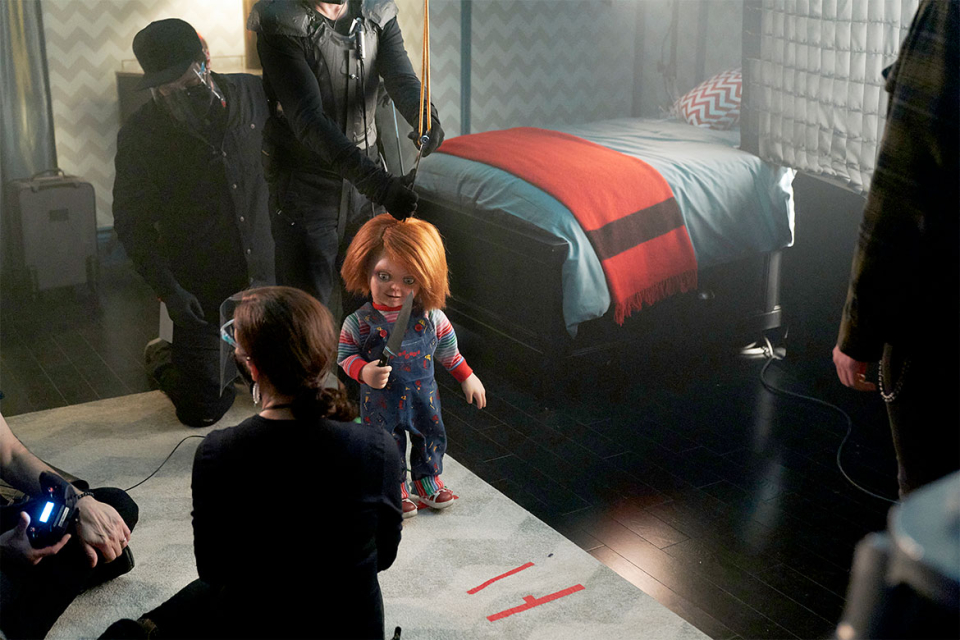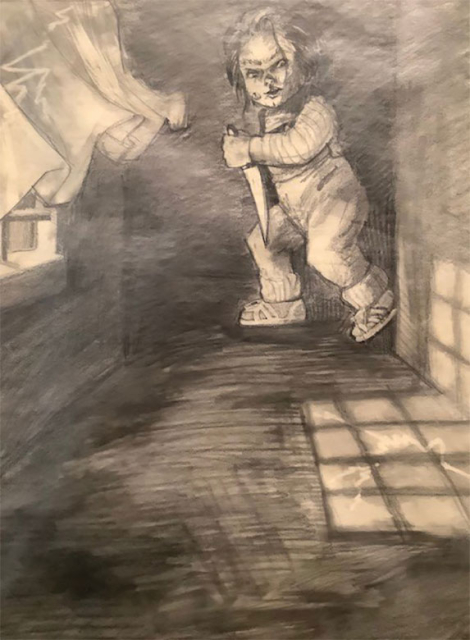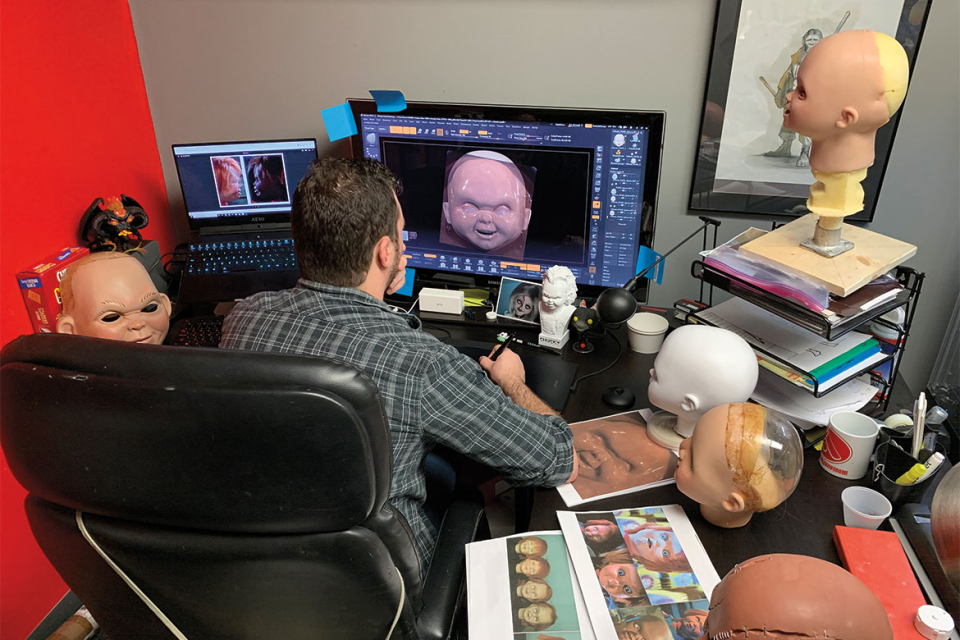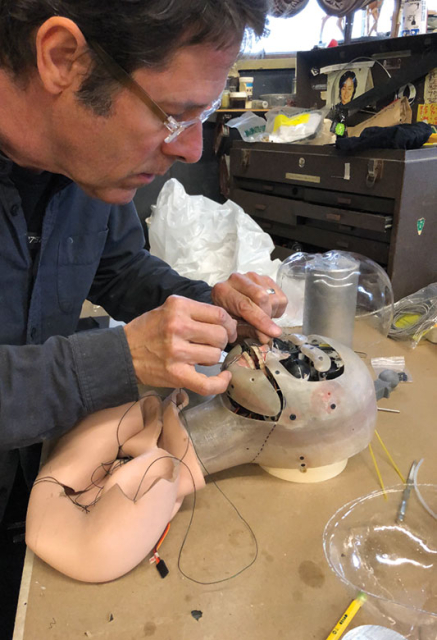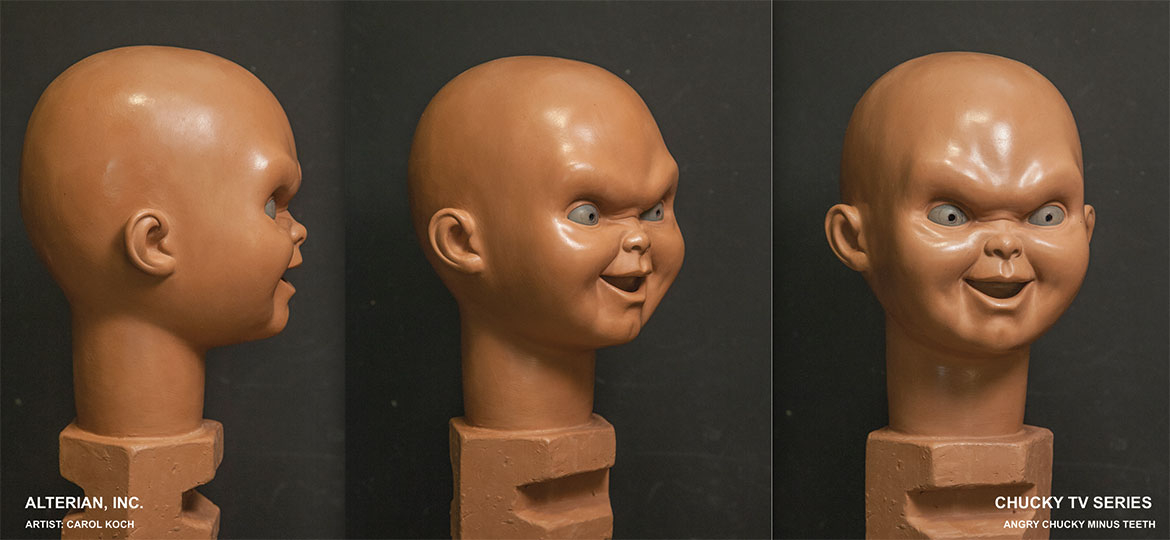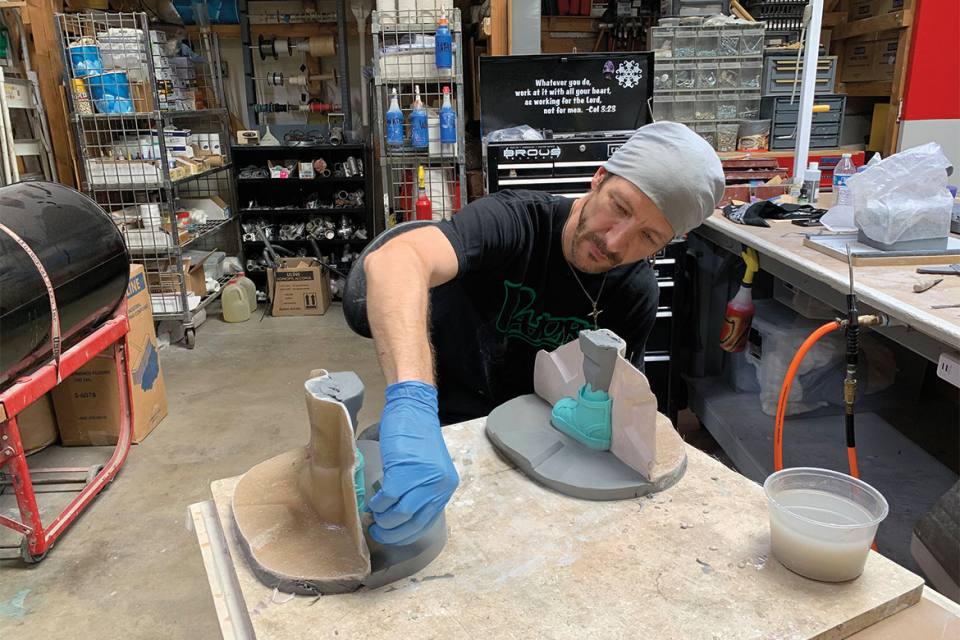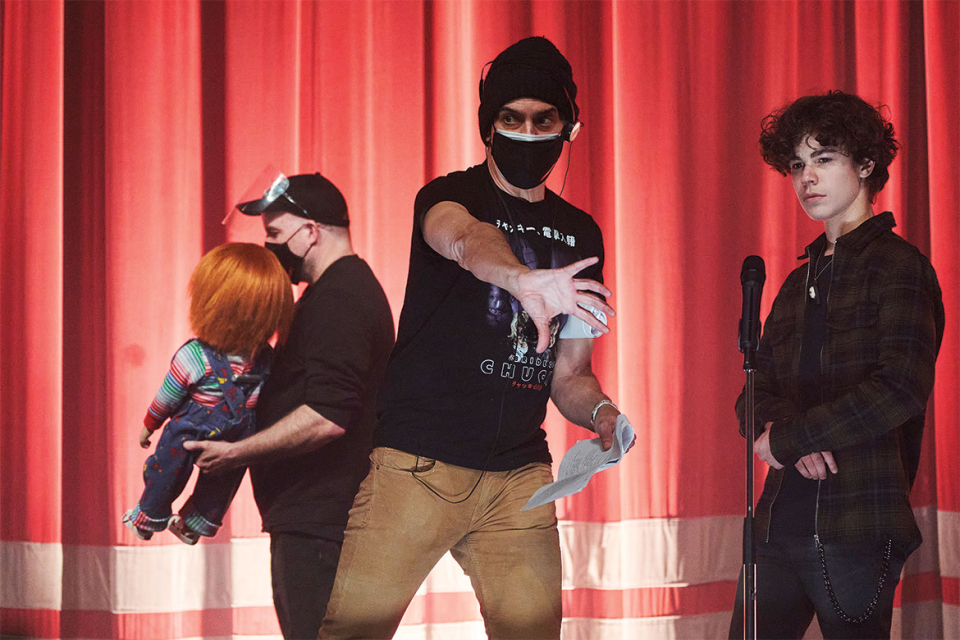Cabbage Patch Kids. Howdy Doody. The "Talky Tina" toy in a 1963 episode of The Twilight Zone.
Oh, sure, those pop-culture relics seem innocent enough. But as Don Mancini tells it, they were the inspiration for a certain red-headed, freckle-faced, overalls-wearing doll with a super-sinister spirit. "My initial impulse was to write a dark story about the hottest, mass-produced toy on the market coming to life," he recalls. "And then the thing you buy your kid to bring him love actually brings murder."
His idea led to the 1988 cult hit Child's Play. And all these decades later, Chucky lives on.
The new incarnation is Chucky, an eight-episode weekly series premiering October 12 on USA and SYFY. It starts with the relentless mini-villain — long possessed by the soul of a serial killer named Charles Lee Ray — turning up at a suburban yard sale.
After 14-year-old Jake (Zackary Arthur, Kidding) takes him home, Chucky wreaks bloody havoc. It's both a continuation of 2017's The Cult of Chucky — Chucky represents the ultimate cunning bully in a town full of 'em — and an origin story that explores how an ordinary kid became a monster. Many alums from the film franchise pop up to warn of his powers, most notably Alex Vincent's Andy Barclay, the OG tormented tyke from Child's Play.
Mancini — whose credits include creator, writer, executive producer, showrunner and director — says Chucky pushes basic-cable boundaries in terms of its chilling tone and profane language.
Its technology, though, is retro magic. "There's no CGI with Chucky at all," he says. "I did two shots of CGI with [2013's] Curse of Chucky because of budget, and fans noticed it immediately and did not like it. I didn't like it either. The look is too smooth."
Instead, an effects team — led by associate producer Tony Gardner, who's worked on the franchise since 2004's Seed of Chucky — crafted several animatronic Chucky characters using Child's Play 2 as the basis for his face. ("His look changes slightly each time," Mancini notes, "but this was the fans' favorite.")
Each version of the doll represents a different emotion, including the smiling "good guy" Chucky, the Chucky who spirals into a "furious, expletive-spouting demon" in an instant and the extremely angry-slash-threatening Chucky. "We have two or three in each category just in case something goes wrong," Mancini notes.
A half-dozen puppeteers (including Gardner) controlled the dolls around the Toronto-based set, and once again, actor Brad Dourif supplied the voice.
"It's so important that Chucky is a physical being whom the actors can respond to," Mancini explains. "It's a burden on the actor, especially young actors, to react to a green screen or a tennis ball. Also, that herky-jerky movement is difficult to build into CGI." The result, he promises, is a "very scary" series that harkens back to the early films.
So, will Chucky ever meet his maker? "You know, I once wrote Chucky a line where he says, 'I'll be back — I always come back — but dying is a bitch,'" Mancini says. "So as long as people are interested in seeing him, he'll be there."
You've been warned.
This article originally appeared in emmy magazine, Issue No. 10, 2021

